The Economics and Statistics Division maintains archives of previous publications for accountability purposes, but makes no updates to keep these documents current with the latest data revisions from Statistics Canada. As a result, information in older documents may not be accurate. Please exercise caution when referring to older documents. For the latest information and historical data, please contact the individual listed to the right.
<--- Return to Archive
For additional information relating to this article, please contact:
June 08, 2018CMHC PRELIMINARY HOUSING STARTS, MAY 2018 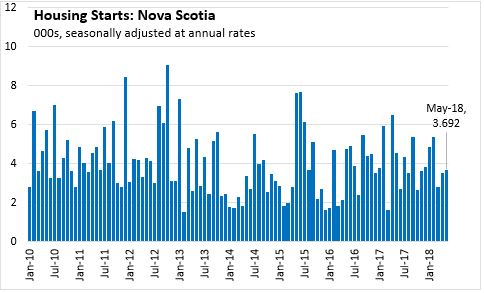
Nova Scotia's housing starts (seasonally adjusted annualized rate) increased 4.8 per cent in May to 3,692, compared to 3,522 in April. Housing starts declined by 15.2 per cent in Halifax to 2,126 compared to 2,506 in April.
Compared to May 2017, Nova Scotia housing starts were down 18.8 per cent and Halifax starts were down 25.1 per cent.

In the first five months of 2018, housing starts were down 9.6 per cent in Nova Scotia compared to the same period in 2017. This reflects a decline in multiple-unit starts in population centres with over 10,000 people.
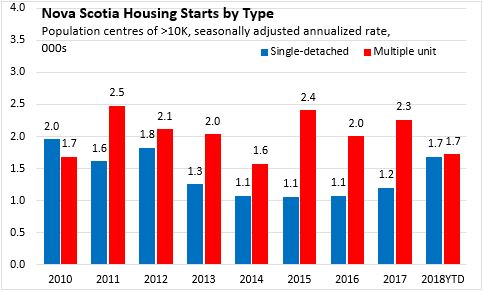
The six-month average of housing starts has remained relatively flat in both Halifax and Nova Scotia through 2017 and into 2018, albeit with some variability month-to-month.
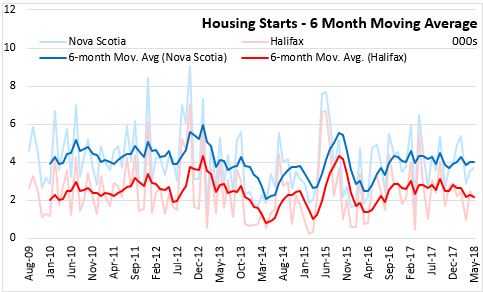
In urban areas, housing starts for multiples are generally higher than for singles with greater variability month-to-month. Starts for singles remained steady through 2017 and have increased in the first months of 2018. After increasing through mid-2016, starts for multiples have declined somewhat.
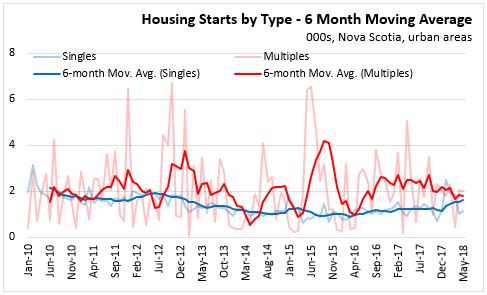
Nationally, housing starts declined 9.8 per cent in May 2018 to 195,613 compared to 216,775 in April. Compared to May 2017, housing starts were up 1.0 per cent.

On a year-to-date basis, housing starts were up in five provinces compared to the first five months of 2017. Newfoundland and Labrador reported the largest increase (+109.1 per cent), while Manitoba posted the largest decline (-35.2 per cent).
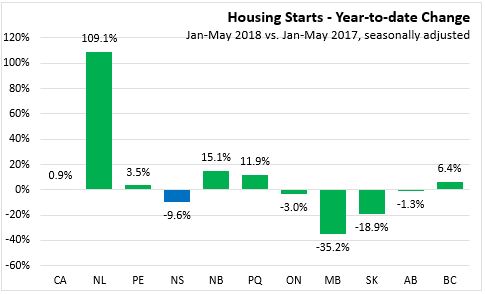
Note: Urban areas are defined as areas over 10,000 people
Statistics Canada: CANSIM table 027-0054, CANSIM table 027-0051.
CHMC Housing Market Information Portal
<--- Return to Archive